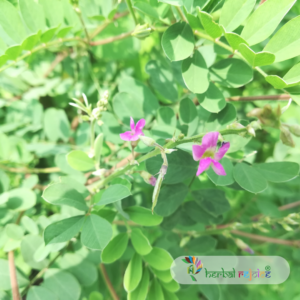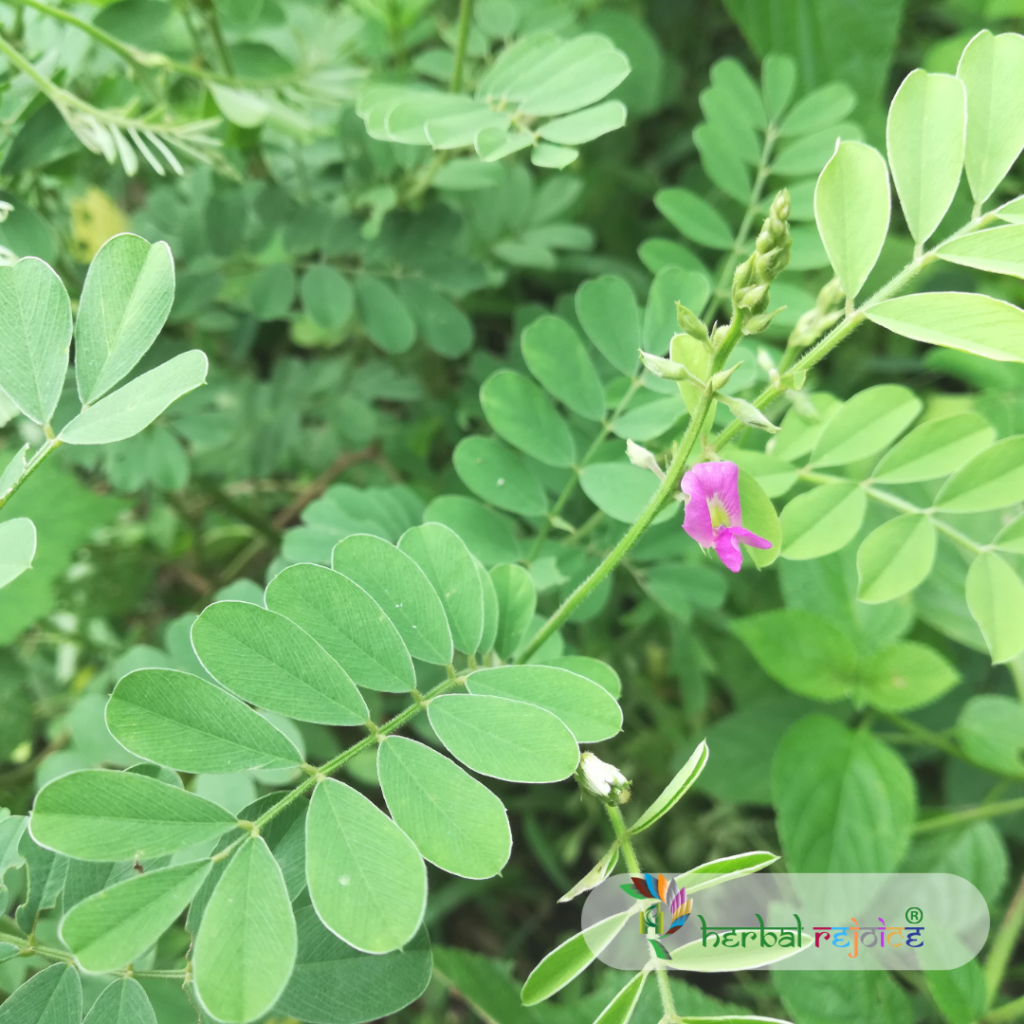Introduction
The Tephrosia purpurea plant, also known as Purple Tephrosia or Wild Indigo, belongs to the family Papilionaceae; Fabaceae. It is widely found all over India and is commonly cultivated as green manure and a cover crop. In Ayurvedic medicine, it is known as Sharapunkhaa, Vishikha-punkhaa, Sarphokaa, while in Unani medicine, it is called Sarponkhaa, Sarphukaa. In Siddha and Tamil traditions, it goes by Kattu-kolingi, Kolingi, Paavali, Mollukkay, and Kollukkayvelai.
Medicinal properties
The Tephrosia purpurea plant is highly valued for its medicinal properties. It is specifically used for treating inflammation of the spleen and liver, earning it the names Plihaa-shatru and Plihaari in Indian medicine. The dried herb is known to have diuretic and deobstruent properties. It also acts as a laxative. It is commonly prescribed for treating cough, bronchitis, bilious febrile attacks, liver insufficiency, jaundice (excluding infantile cirrhosis), kidney disorders, bleeding piles, boils, pimples, and can also be used as a gargle.
The root of the Tephrosia purpurea plant is used to make a decoction that helps with dyspepsia, diarrhea, cough, bronchitis, adenoids, asthma, and rheumatism. Its juice is applied to skin eruptions, while a liniment made from the root is used to treat elephantiasis. The oil extracted from the seeds of the plant is known to be effective against skin conditions like eruptions, eczema, scabies, and leprosy. Additionally, the seed extract has been found to have hypoglycemic properties.
A study conducted on the aerial parts of the Tephrosia purpurea plant showed that its powdered form prevented the elevation of SGOP, SGPT, and bilirubin levels in the body. The hepatoprotective effect of the aerial parts was also evaluated against hepatotoxicity induced by galactosamine and carbon tetrachloride in rats.

Chemical Constituents
Chemical analysis of the Tephrosia purpurea plant has revealed the presence of rutin, rotenoids, lupeol, beta-sitosterol, and other compounds. The highest concentration of rotenoids was found in the seeds. The plant extract has shown significant hypoglycemic effects in normal and alloxan-induced diabetic rabbits, with a 60-70% decrease in blood glucose levels compared to tolbutamide. The roots of the Shveta Sharapunkhaa variety (characterized by white-haired stems and pale pink or pale violet flowers) contain 7-methylglabranin. The pods of the plant contain rotenoids such as villosin, villon, villosol, villosinol, villinol, and villosone. The fresh root is said to have hypoglycemic properties, while the leaves do not exhibit the same effect. In Ayurvedic medicine, it is believed to be a special drug for treating sterility in women.
Other Uses
T. uniflora subspecies petrosa, also known as Kant-punkhaa, is another variety of Tephrosia purpurea used for medicinal purposes. The boiled leaves of this variety are used for treating syphilis. Its medicinal properties are similar to T. purpurea but milder in effect. T. spinosa Pers., also known as Kant-punkhaa or Mulukolingi in Tamil Nadu, is found in South India, primarily in hilly regions up to 400 meters. The root of this plant is applied to joint inflammations and swellings, while a decoction of the root is used for rheumatism. Various compounds such as chalcones, spinochalones, and fulvinervin A have been isolated from the root of this plant.
Dosage
The recommended dosage of Tephrosia purpurea plant, root, or seed is 3-5 grams in powdered form.
Conclusion
Tephrosia purpurea, valued in Ayurvedic, Unani, and Siddha medicine, is renowned for its wide-ranging therapeutic uses, from treating liver and spleen issues to addressing skin conditions and diabetes. Its rich chemical profile, including rutin and rotenoids, supports its medicinal benefits. While traditional practices and scientific studies highlight its potential, it is important to consult healthcare professionals before use. Ongoing research may further reveal the full extent of Tephrosia purpurea’s health benefits.
Frequently Asked Questions
What is the scientific name of the Purple Tephrosia plant?
The scientific name of the Purple Tephrosia plant is Tephrosia purpurea.
What are the common names of the Tephrosia purpurea plant?
The Tephrosia purpurea plant is also known as Purple Tephrosia, Wild Indigo, Sharapunkhaa, Vishikha-punkhaa, Sarponkhaa, Sarphukaa, Kattu-kolingi, Kolingi, Paavali, Mollukkay, and Kollukkayvelai.
What family does the Tephrosia purpurea plant belong to?
The Tephrosia purpurea plant belongs to the Papilionaceae; Fabaceae family.
What is the Tephrosia purpurea plant commonly cultivated for?
The Tephrosia purpurea plant is commonly cultivated as green manure and a cover crop.
What are the medicinal properties of the Tephrosia purpurea plant?
The Tephrosia purpurea plant is known for its medicinal properties, including its use in treating inflammation of the spleen and liver, cough, bronchitis, bilious febrile attacks, liver insufficiency, jaundice, kidney disorders, bleeding piles, boils, pimples, and as a gargle.
How is the root of the Tephrosia purpurea plant used in medicine?
The root of the Tephrosia purpurea plant is used to make a decoction that helps with dyspepsia, diarrhea, cough, bronchitis, adenoids, asthma, and rheumatism.
What skin conditions can the oil extracted from the seeds of the Tephrosia purpurea plant treat?
The oil extracted from the seeds of the Tephrosia purpurea plant is known to be effective against skin conditions like eruptions, eczema, scabies, and leprosy.
What chemical compounds are found in the Tephrosia purpurea plant?
Chemical analysis of the Tephrosia purpurea plant has revealed the presence of rutin, rotenoids, lupeol, beta-sitosterol, and other compounds.
What is the recommended dosage of the Tephrosia purpurea plant?
The recommended dosage of the Tephrosia purpurea plant, root, or seed is 3-5 grams in powdered form.
What is the hepatoprotective effect of the aerial parts of the Tephrosia purpurea plant?
A study showed that the powdered form of the aerial parts of the Tephrosia purpurea plant prevented the elevation of SGOP, SGPT, and bilirubin levels in the body, demonstrating its hepatoprotective effect.
What is the primary use of the Tephrosia purpurea plant in Ayurvedic medicine?
The Tephrosia purpurea plant is primarily used in Ayurvedic medicine for treating inflammation of the spleen and liver.
What are some of the traditional names of the Tephrosia purpurea plant in different medical traditions?
In Unani medicine, the Tephrosia purpurea plant is called Sarponkhaa, Sarphukaa. In Siddha and Tamil traditions, it goes by Kattu-kolingi, Kolingi, Paavali, Mollukkay, and Kollukkayvelai.
What properties does the dried herb of the Tephrosia purpurea plant have?
The dried herb of the Tephrosia purpurea plant has diuretic and deobstruent properties, and it also acts as a laxative.
Can the Tephrosia purpurea plant be used to treat jaundice?
Yes, the Tephrosia purpurea plant can be prescribed for treating jaundice, excluding infantile cirrhosis.
What are the compounds found in the root of the Shveta Sharapunkhaa variety of the Tephrosia purpurea plant?
The roots of the Shveta Sharapunkhaa variety contain 7-methylglabranin.


